LG V40 vs. LG G7: Which should you ThinQ about buying?
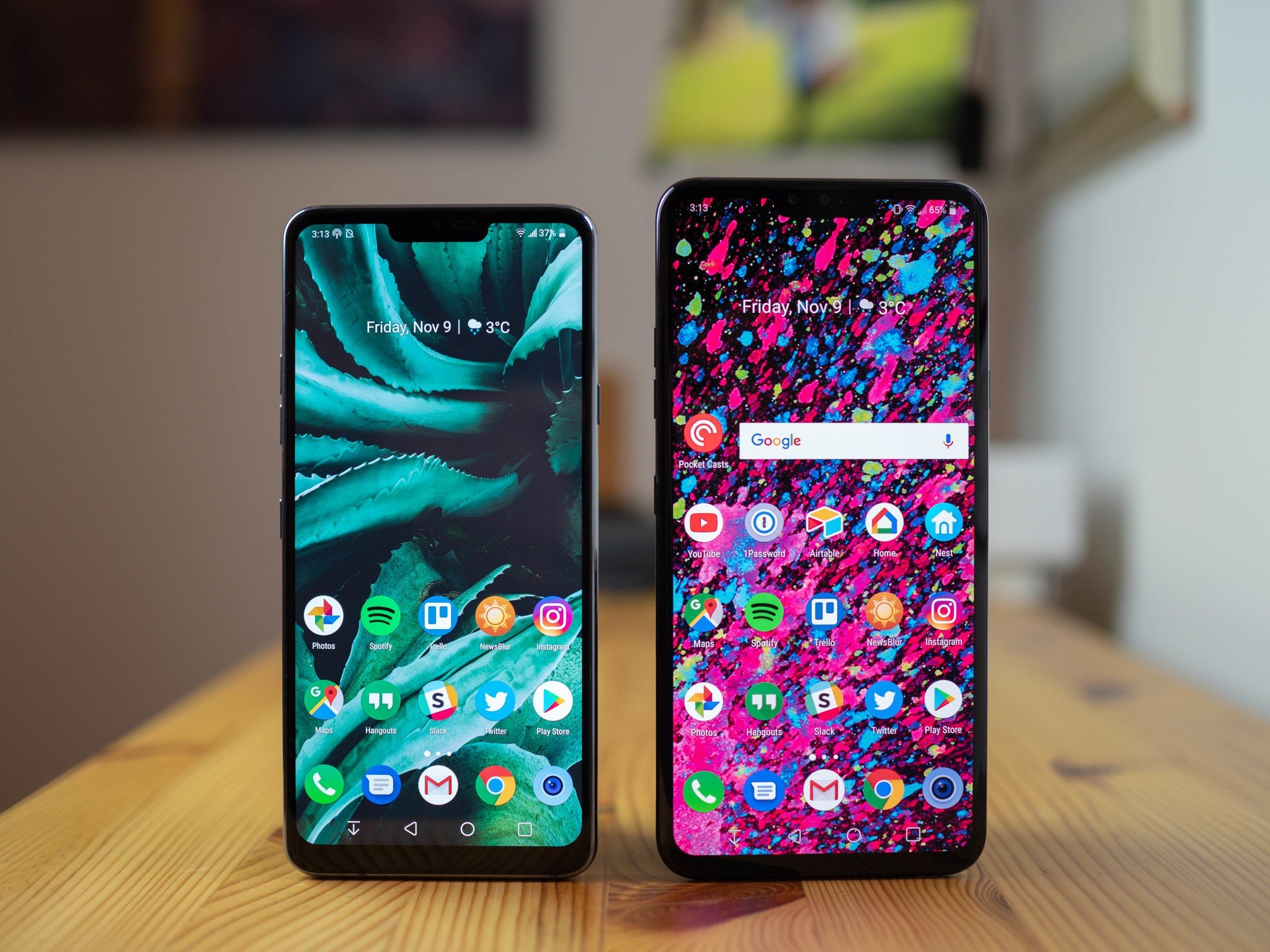
LG G7
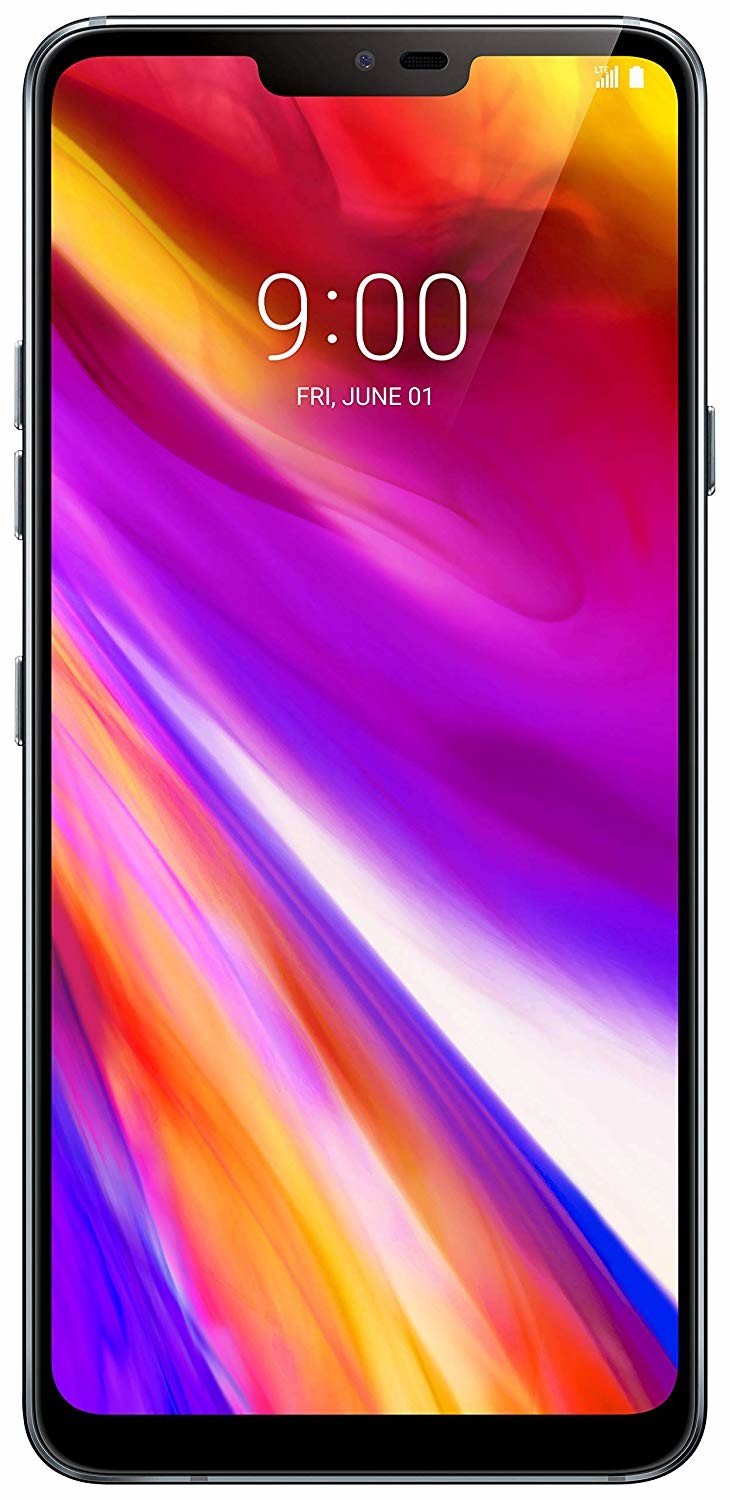
The G7 is still a really good phone, particularly after some price cuts that drop it to $700. It has high-end specs, a good screen, and solid features — it's only slightly let down by its battery size and camera quality.
LG G7
Budget option
LG V40
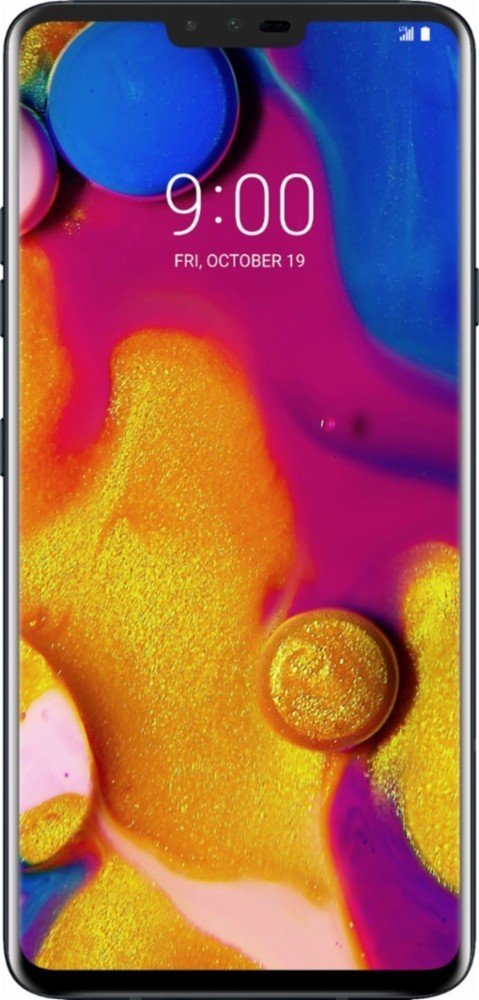
The V40 effectively challenges the Galaxy S9+ and does so with the same basic foundation as the LG G7. It has a larger screen, larger battery, and better camera setup, but that's really it — yet it's $250 more, which is a tough sell when the G7 is so good.
LG V40
High-end
LG settled into a simpler release cycle that slowed down year-over-year changes and brought the G and V series even closer together. With so much shared between the G7 and V40, which is the right ThinQ model for you?
Should you buy the new LG V40 or the older LG G7?
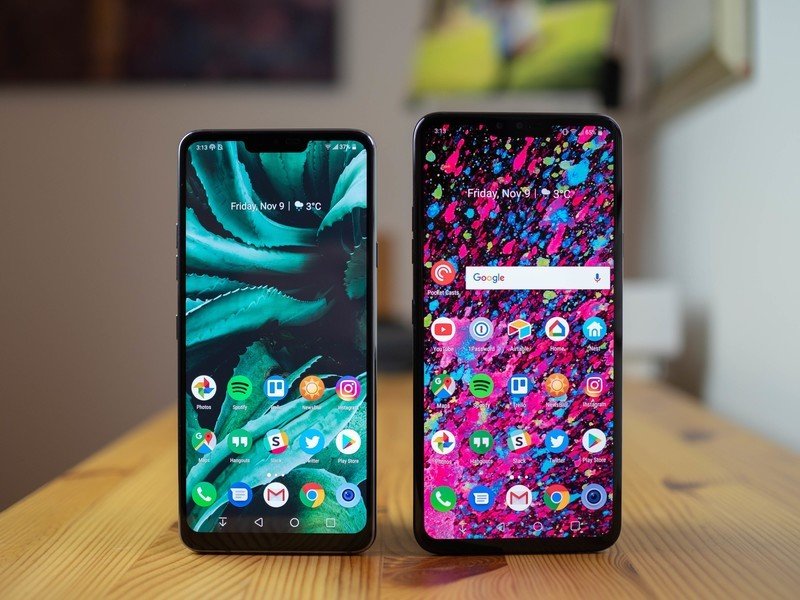
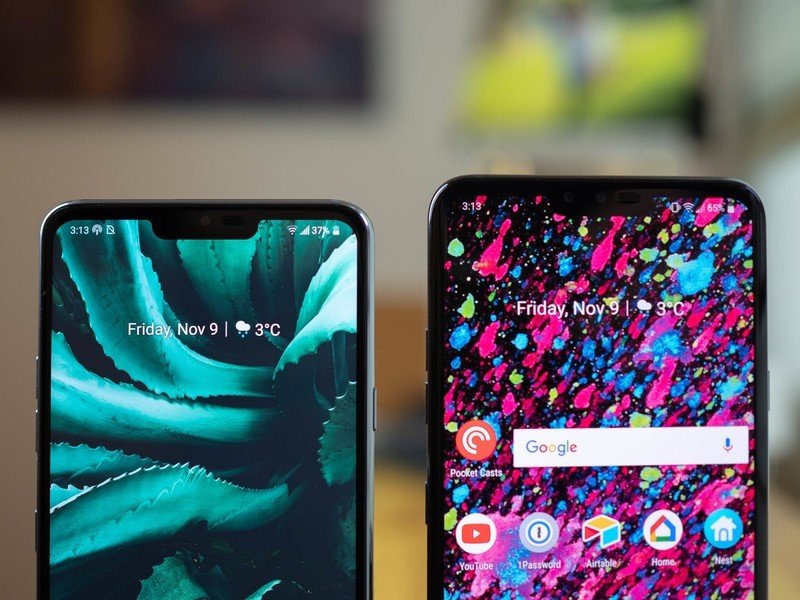
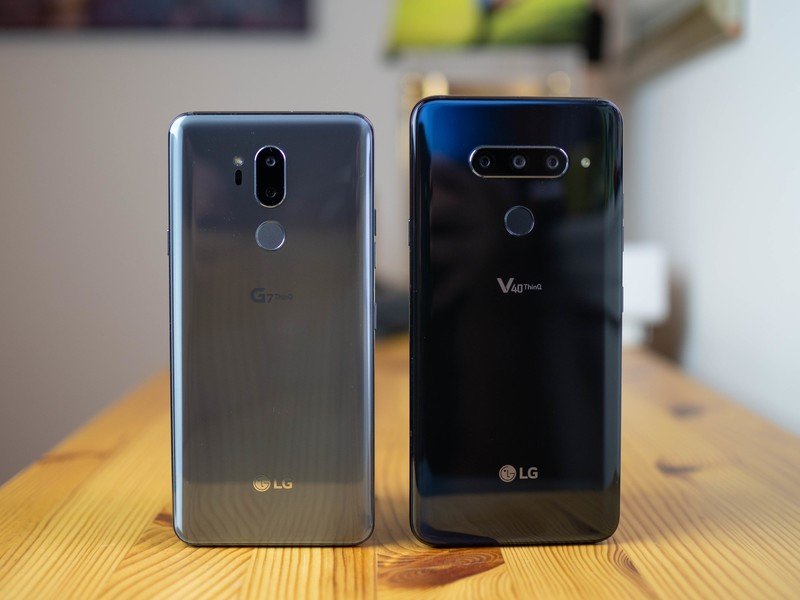
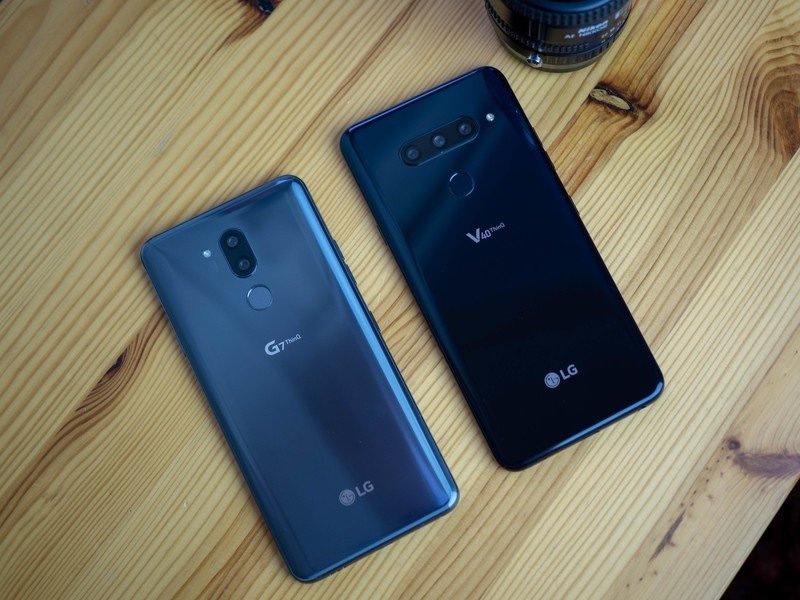
The LG G7 and LG V40 may technically be from different product lines, but they sure do share a lot of features and specs. Their external hardware and design are nearly identical, with the typical metal-and-glass sandwich that's sturdy and nice to look at. They're both rated at IP68 for water resistance, have the same fingerprint sensor, run on the same Snapdragon 845 processor, and have both Quick Charge 3.0 and wireless charging. They also both have the same audio experience, with a single "BoomBox" speaker, headphone jack, and high-quality DAC for a better wired headphone experience.
| Category | LG V40 | LG G7 |
|---|---|---|
| Operating system | Android 8.1 Oreo | Android 8.0 Oreo |
| Display | 6.4-inch OLED3120x1440 (19.5:9) | 6.1-inch LCD3120x1440 (19.5:9) |
| Processor | Qualcomm Snapdragon 845 | Qualcomm Snapdragon 845 |
| RAM | 6GB | 4/6GB |
| Storage | 64GB | 64/128GB |
| Expandable | MicroSD | MicroSD |
| Rear camera 1 | 12MP, 1.4-micron, OIS, f/1.5, 78-degree lens, PDAF | 16MP, 1-micron, OIS, f/1.6, 71-degree lens |
| Rear camera 2 | 16MP, 1-micron, f/1.9, 107-degree lens | 16MP, 1-micron, f/1.9, 107-degree lens |
| Rear camera 3 | 12MP, 1-micron, f/2.4, 45-degree lens, 2X zoom | n/a |
| Front camera 1 | 8MP, f/1.9, 80-degree lens | 7MP, f/1.9, 80-degree lens |
| Front camera 2 | 5MP, f/2.2, 90-degree lens | n/a |
| Connectivity | 802.11ac Wi-Fi, Bluetooth 5.0, NFC, USB-C | 802.11ac Wi-Fi, Bluetooth 5.0, NFC, USB-C |
| Audio | BoomBox speaker3.5mm headphone jack32-bit Quad DAC | BoomBox speaker3.5mm headphone jack32-bit Quad DAC |
| Battery | 3300mAhNon-removable | 3000mAhNon-removable |
| Charging | Quick Charge 3.0Qi wireless charging | Quick Charge 3.0Qi wireless charging |
| Water resistance | IP68 | IP68 |
| Security | One-touch fingerprint sensor | One-touch fingerprint sensor |
| Dimensions | 158.8 x 75.7 x 7.6 mm169 g | 153.2 x 71.9 x 7.9 mm162 g |
| Colors | Aurora Black, Moroccan Blue | Moroccan Blue, Aurora Black, Raspberry Rose, Platinum Gray |
The V40 brings a bigger screen, bigger battery, and camera upgrades — all welcomed additions.
The biggest difference between the phones is, well, how big the V40 is. With a 6.4-inch display to the G7's 6.1-inch, you get a notable amount of more screen real estate to look at and interact with. However, that also makes the V40 taller and wider — it doesn't feel like the same class of phone. Even though it isn't much heavier, the V40 is notably tougher to use in one han, but the display itself is an improvement, with an OLED panel that's more colorful than the G7's LCD and has an automatic brightness mode that better handles a wide range of situations. The larger size also gives the V40 a 10 pecent larger battery, which helps it stay in the "average" battery life category.
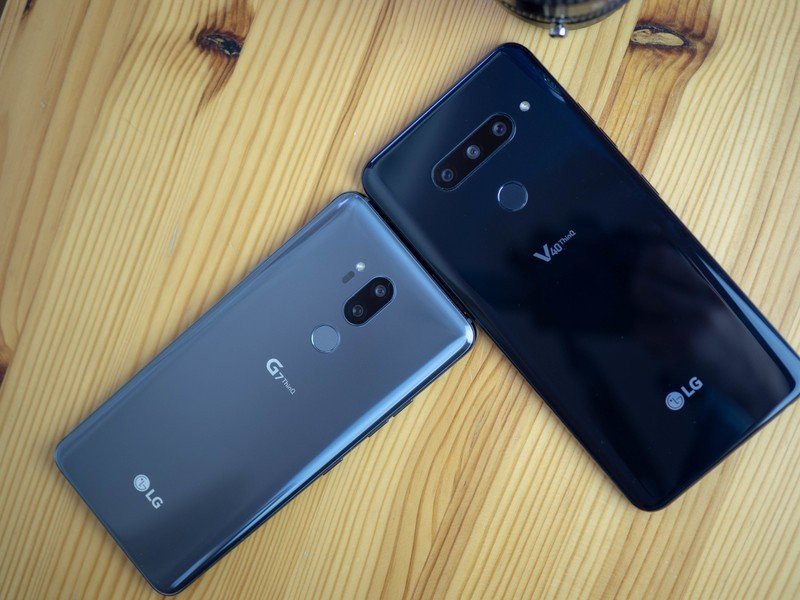
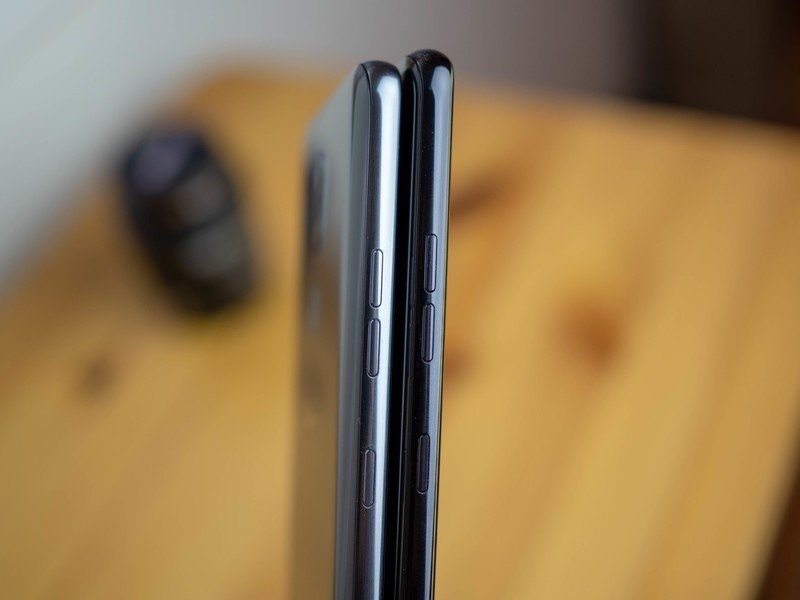
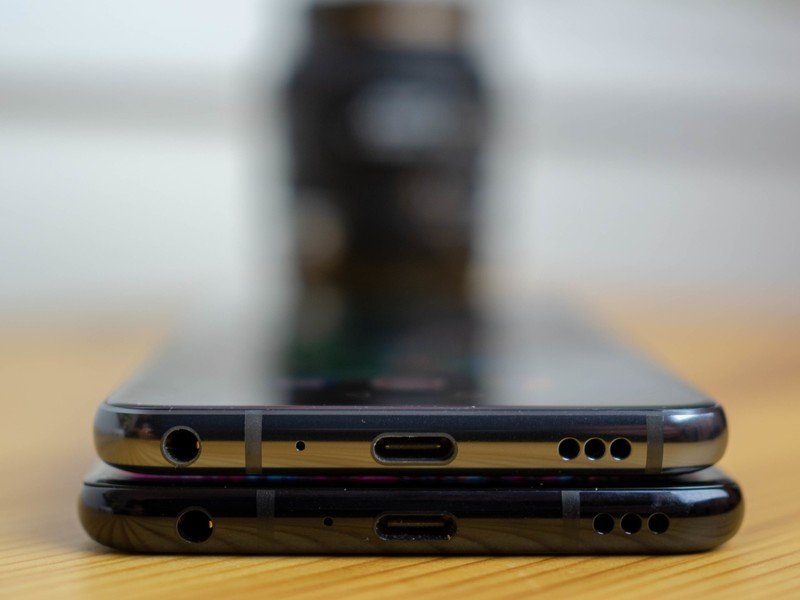
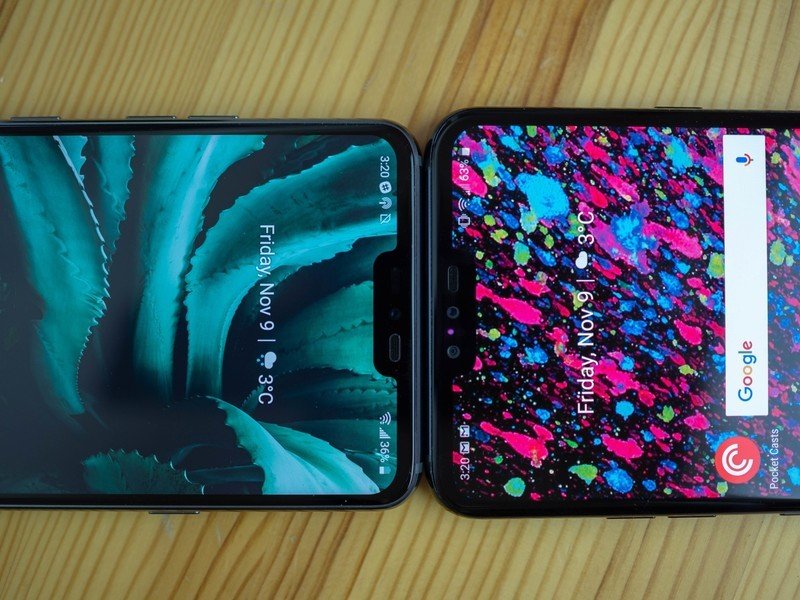
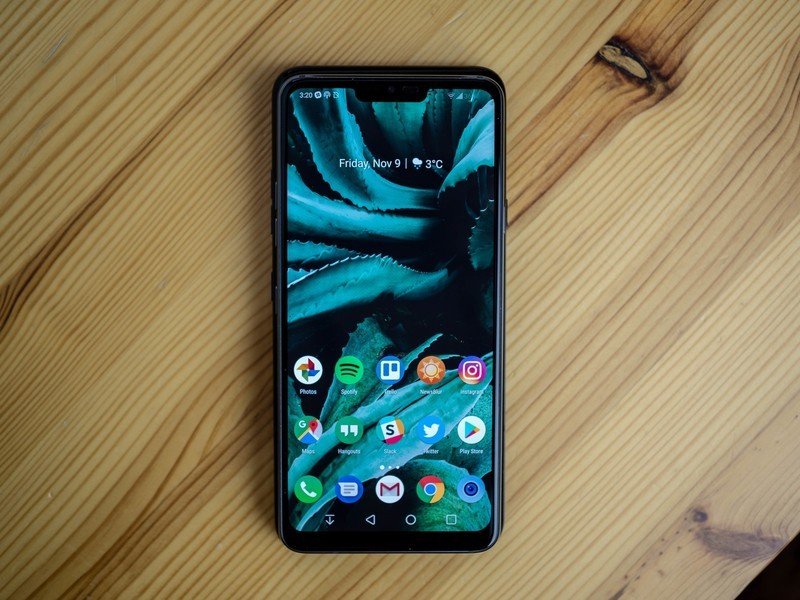
Several months of development also let LG change up and improve the overall camera package of the V40. The main camera, which was a weak point for the G7, has been improved to a new 12MP sensor with much larger pixels and a brighter lens — and the results are notably improved, making the V40 considerably closer to the high-end competition. The wide-angle camera remains unchanged, but the pair are now joined by a telephoto camera; that enables lossless 2X zooming, portrait mode effects, and a few neat triple-shot options. It's not a great camera on its own, but when paired with the improved main camera and still-great wide-angle camera, the package is a bit more fun and capable than the G7. The front-facing camera also hasn't changed but is joined by a new wide-angle shooter that once again offers more shooting options.
The V40 is undoubtedly better, but not quite enough to justify a $250 higher price.
So the V40 doesn't bring a ton more to the table than the G7, but it does add up to making it a better overall phone. The nice thing in this comparison is that the V40 isn't missing anything found in the G7 — it's all about upgrades. The question then is how much value you can really place on the larger screen, larger battery, and new camera equipment. Right now the LG G7 has crept down to about $700, while the new LG V40 is still up at its original $950 price. The $250 price difference doesn't seem like a reasonable amount to pay for such subtle upgrades.
Be an expert in 5 minutes
Get the latest news from Android Central, your trusted companion in the world of Android
So if you can manage the smaller battery on the G7 and aren't focused on getting the absolute best camera quality, the G7 is the better bet here for price-conscious buyers. But when price isn't much of a factor, the V40 is definitely the better phone — and a good phone overall at that.

This is a flagship bargain
Aggressive price cuts have brought the LG G7 down to about $700, which is a really good deal for what's still a solid phone with a lot of good features. It doesn't go toe-to-toe with the latest, but offers a nice value proposition and is a good pickup at this price.

A competitive high-end phone, with a price to match
LG tried to go after the top end of the market, and succeeded with the V40. It has everything you want in a high end phone, and a price tag that reflects that. But for potential LG buyers, it doesn't necessarily offer $250 more value than the G7, considering all of the shared features and components.
Andrew was an Executive Editor, U.S. at Android Central between 2012 and 2020.

